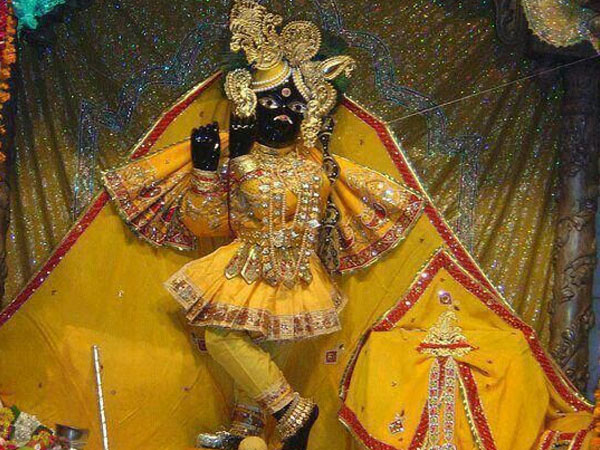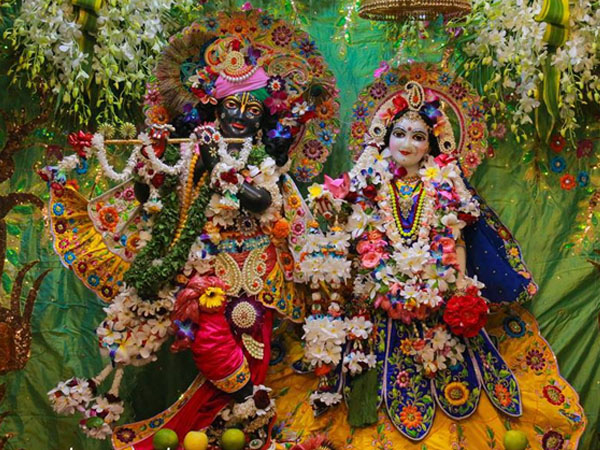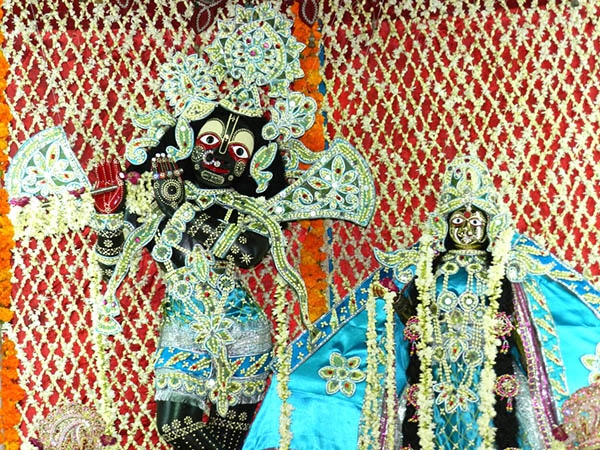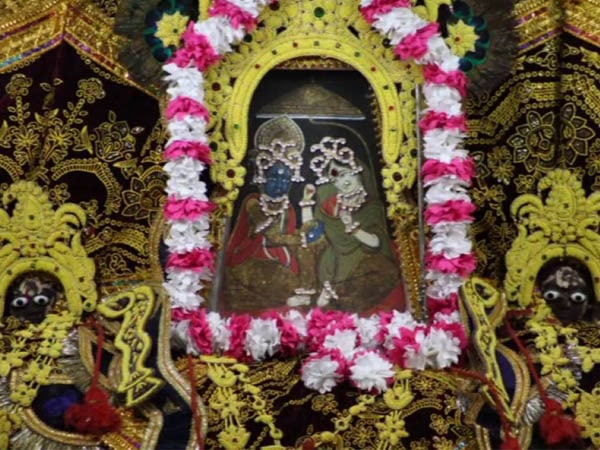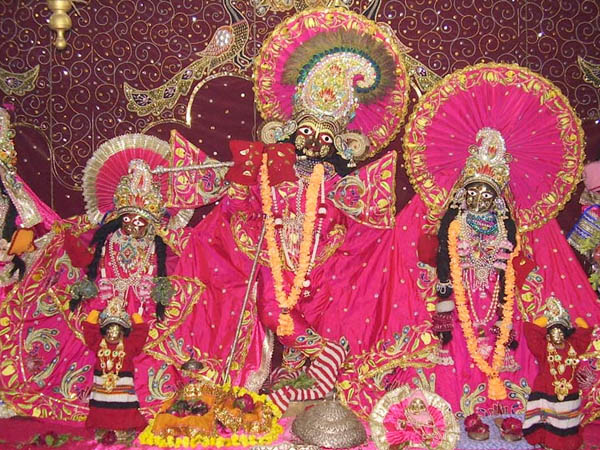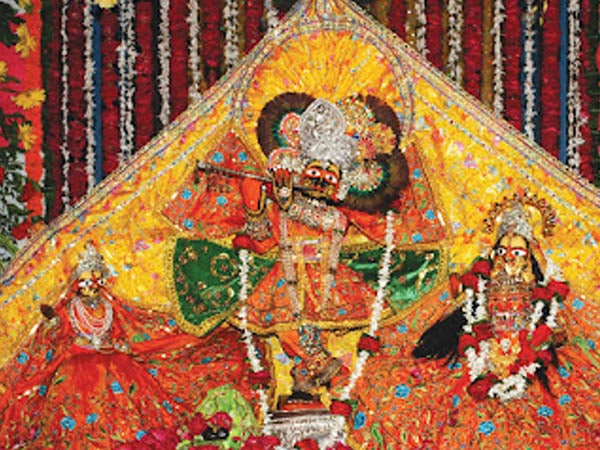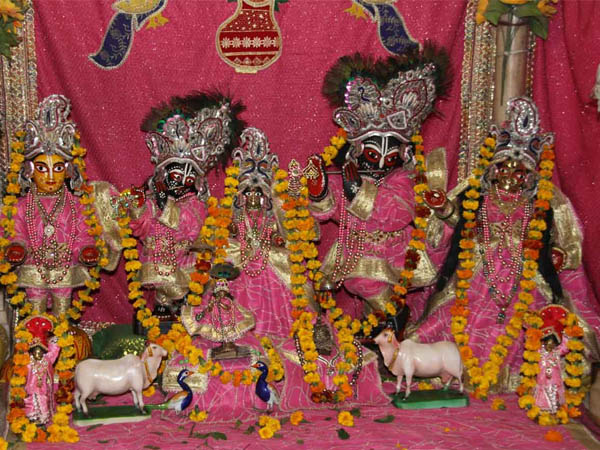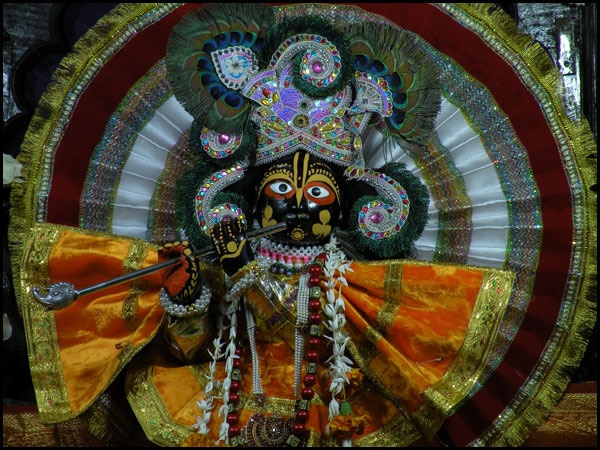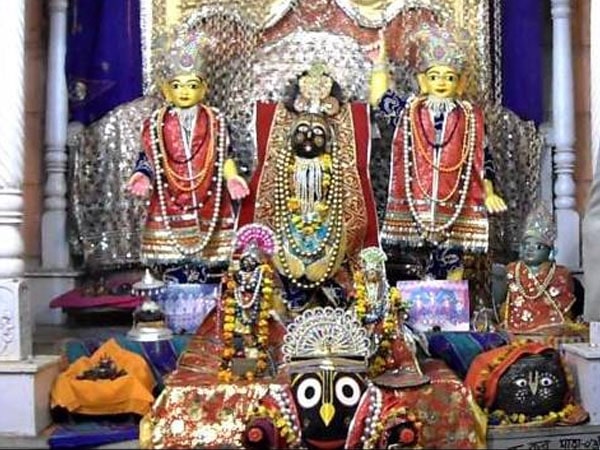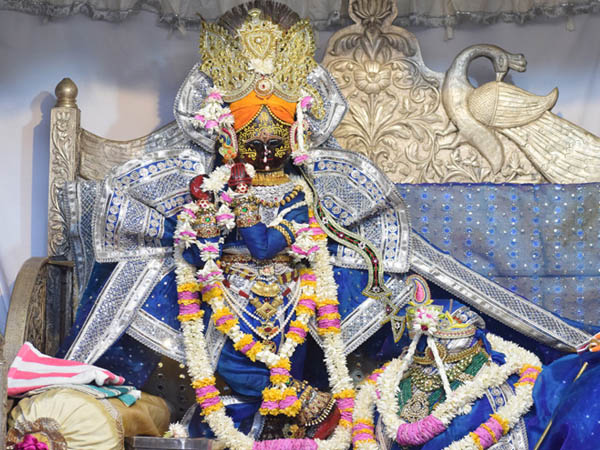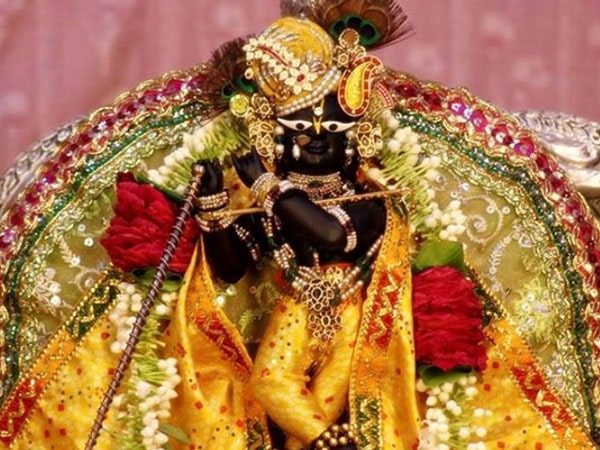
Radha Raman means the lover (ramana) of Srimati Radha. is an early modern period Hindu temple in Vrindavan, India dedicated to Lord Krishna as Radha Ramana. It was constructed at the request of Gopala Bhatta Goswami at around 1542 AD.This temple is among the 7 temples of Thakur of Vrindavan including Sri Radhavallabh ji, Shri Govind Dev ji and four others. The temple is exquisitely crafted and one of the most revered temples in Vrindavan, especially by the followers of Gaudiya Vaishnavism.It houses the original shaligram deity of Krishna alongside Radharani

